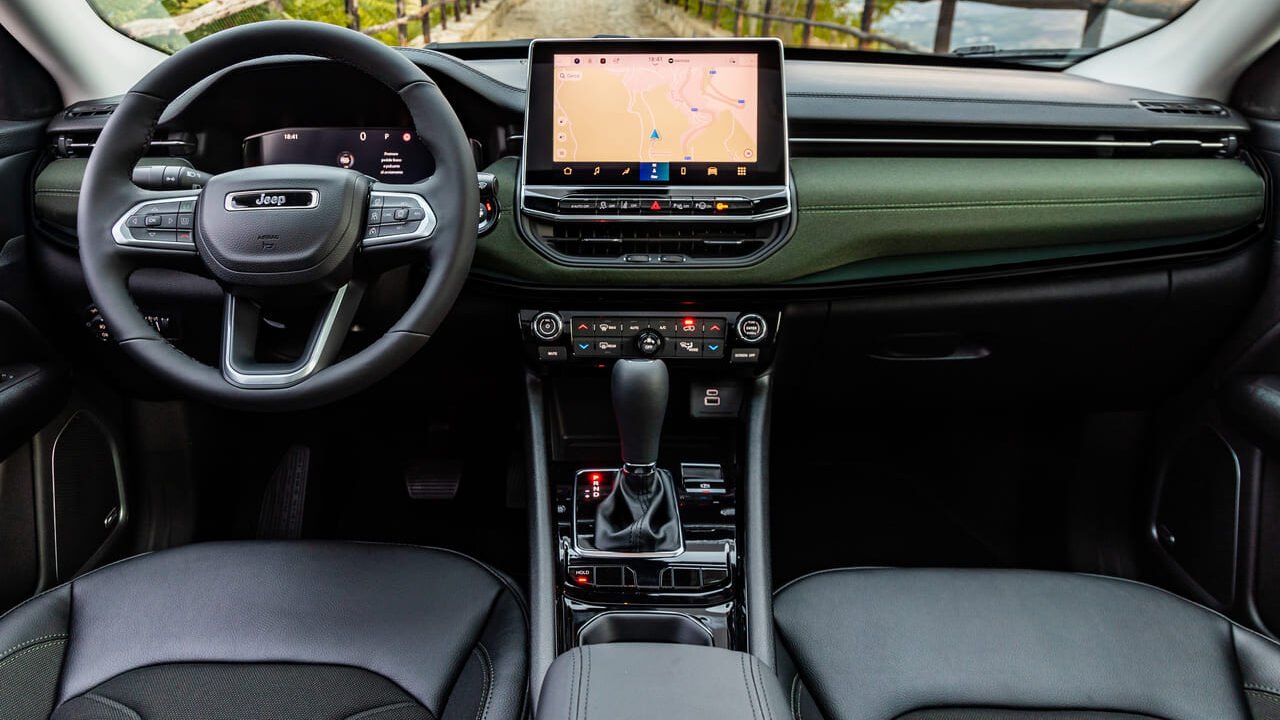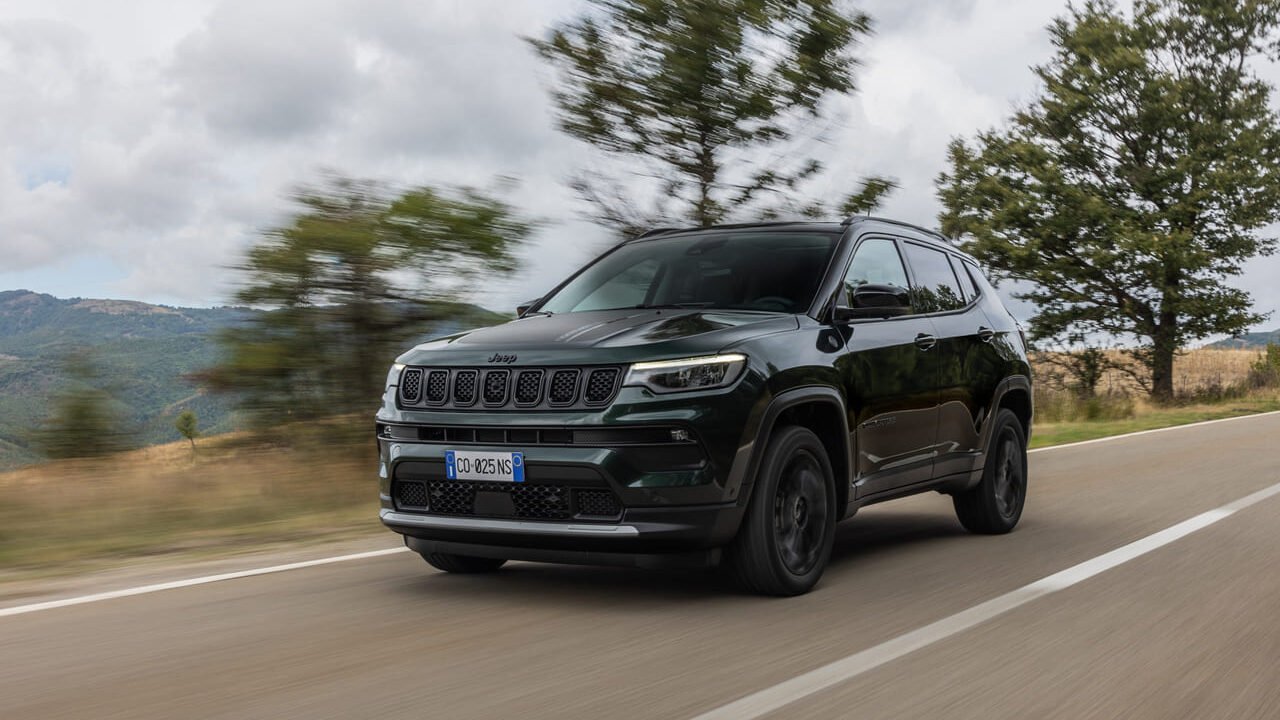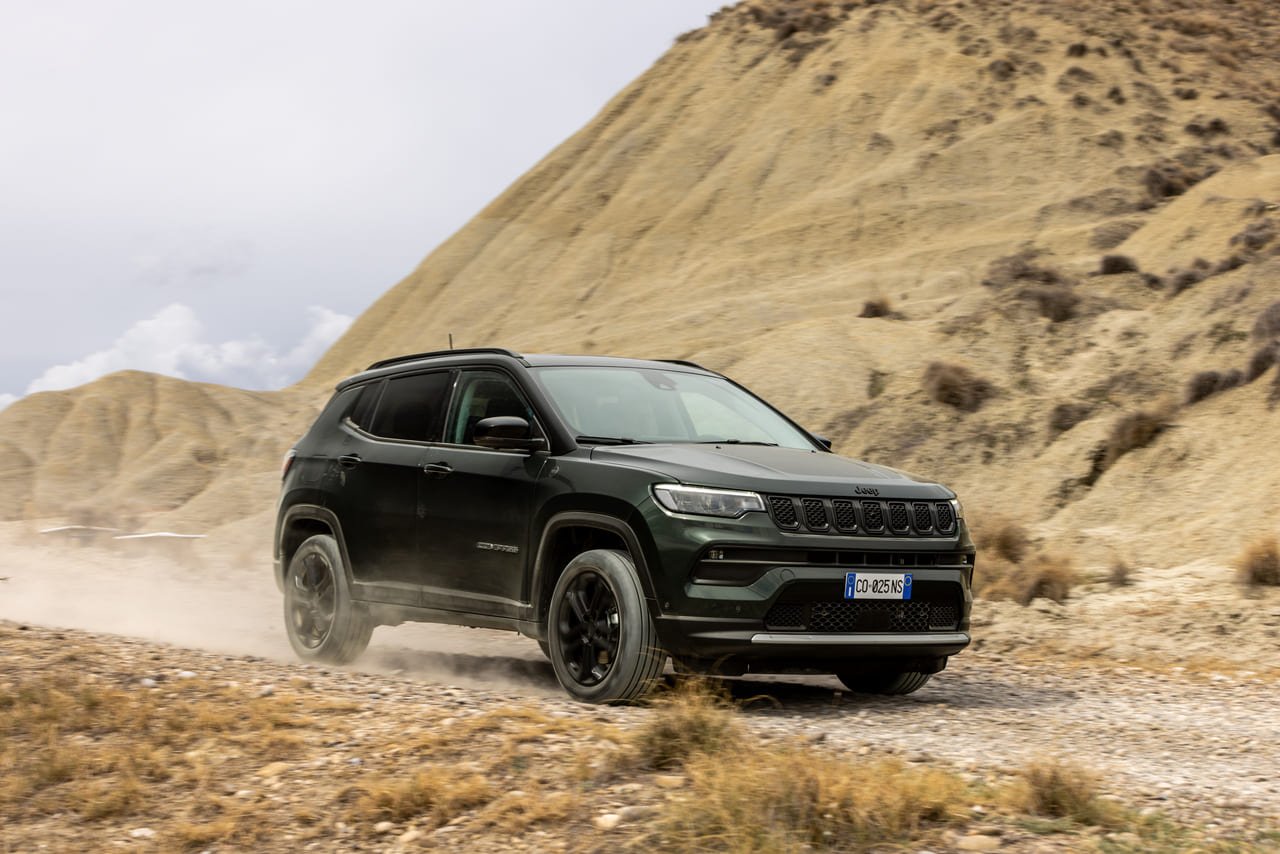Jeep Compass reliability is often a hot topic among Jeep fans. On one side, you’ve got the Compass with its tough looks, cool tech, and the classic Jeep vibe that comes with its name. But then there are people who wonder if this smaller Jeep really lives up to the brand’s tough image or if it’s just gonna give you expensive mechanical headaches like some reliability studies suggest such as the one from Consumer Reports.
In this post, we’re gonna unpack this debate and share some maintenance tips to help you figure out if the Jeep Compass fits your lifestyle.
A Brief Overview of the Jeep Compass
The Compass made its debut in Jeep’s lineup back in 2007. It was aimed at those looking for that classic Jeep adventurous vibe but in a smaller and more fuel-efficient ride than the Wrangler or Grand Cherokee. Since then, it’s seen a lot of changes in both design and mechanics, especially with the current model that came out in 2017. Jeep wanted this compact SUV to sit nicely between the smaller Renegade and the bigger Cherokee, offering a great look, decent off-road skills, and all the latest tech.
Where It Fits
- Segment: Compact crossover SUV
- Rivals: Subaru Crosstrek, Mazda CX-30, Hyundai Tucson, and Honda HR-V (among others)
- Key Selling Points: Distinctive Jeep styling, optional four-wheel drive, comfortable seating for four adults.
Even with Jeep’s rich history in off-roading, the Compass is really more about everyday driving, though it can handle some light off-roading now and then. Over the years, its reliability has been hit or miss.

Why the Compass Appeals to Buyers
1. Jeep Heritage in a Manageable Size
Not everyone wants a large, gas-guzzling SUV like the Grand Cherokee. The Compass meets the demand for a compact, city-friendly vehicle that can still handle the occasional unpaved trail or adverse weather conditions. Its styling cues—boxy silhouette, seven-slot grille—make it immediately recognizable as a Jeep.
2. Feature-Packed Modern Interiors
Recent Compass models come with Uconnect infotainment, Apple CarPlay, Android Auto, available panoramic sunroofs, heated seats, and advanced safety aids like lane-departure warning or adaptive cruise control. These features cater to drivers who want up-to-date technology without the price tag of more upscale SUVs.
3. Competitive Pricing
The Compass is priced below other Jeep models like the Cherokee and Wrangler. This relatively approachable MSRP entices younger buyers or those seeking a second family vehicle. Even so, owners must be mindful of reliability concerns and ownership costs.
Common Reliability Concerns
The earlier version was built on a platform shared with the sturdy Mitsubishi Outlander. However, the latest generation is a Jeep creation that shares components with the Fiat 500X, which hasn’t exactly ranked high in reliability. We think that’s where those lower reliability scores come from. Below are the most commonly cited concerns:
1. Transmission Problems
- Symptoms: Rough shifting, delayed engagement, or sudden gear “hunting.”
- Potential Cause: The Compass has used a mix of CVTs (Continuously Variable Transmissions) and traditional automatics in various model years. Early CVT-equipped models were notorious for subpar durability.
2. Electronic Glitches
- Symptoms: Infotainment freezing, random dashboard warning lights, or power window malfunctions.
- Potential Cause: Software bugs in Uconnect systems or compromised wiring harnesses.
3. Premature Wear on Suspension Components
- Symptoms: Clunking noises, uneven tire wear, or sloppy handling.
- Potential Cause: Lower-grade bushings in earlier generations, plus the added stress from rough roads or mild off-roading.
4. Engine Stalling or Rough Idle
- Symptoms: Random stalling at stoplights or hesitating on acceleration.
- Potential Cause: Faulty sensors (e.g., crankshaft position sensor), throttle body carbon buildup, or sporadic ECM software issues.
Even though these issues can be annoying, a lot of them can be eased with regular upkeep and new parts. Jeep has also rolled out some updates to fix known problems.
Model-Year Differences and Notable Changes
First-Generation (2007–2016)
The early models got some flak for their cheap interiors and clunky CVTs along with not being very good for off-roading. But a big update in 2011 made things better by upgrading the materials inside and introducing a “Trail Rated” version for those who wanted to hit the trails.
Key Milestones:
- 2011 Refresh: Updated styling, better interior quality.
- Trail Rated Compass: Gained improved ground clearance and skid plates, though still overshadowed by the Wrangler in serious off-road scenarios.
Second-Generation (2017–Present)
The second-gen Compass hit the global market in late 2016 and takes some design inspiration from the Grand Cherokee. It has a fresher look, the inside feels much nicer than before, and it comes with better tech features as standard..
Key Improvements:
- Upgraded Infotainment: Uconnect system with user-friendly interface.
- Enhanced Powertrain: 2.4L Tigershark engine mated to either a 6-speed manual, 6-speed automatic, or 9-speed automatic.
- Safety Features: Lane-departure warning, forward collision mitigation, blind-spot monitoring available.
Despite the improvements in powertrain compared to the first-gen, owners still report sporadic transmission or electronic gremlins.
Engine Options and Drivetrain Variants
Powertrains
- 2.4L Tigershark I4: Common across multiple FCA (Stellantis) vehicles. Offers around 180 horsepower.
- 1.3L Turbo (Select Global Markets): Some regions see a smaller turbo engine, focusing on efficiency.
Transmission Choices
- 6-Speed Manual: Rare, typically found in base trims or certain global markets.
- 6-Speed Automatic: More common in lower or mid-level trims. Reasonably reliable.
- 9-Speed Automatic: Found in higher trims. Offers better fuel economy but known for shift-related quirks.
Front-Wheel Drive vs. All-Wheel Drive
- FWD: Improves fuel efficiency. Recommended for urban drivers with mild climates.
- Jeep’s Active Drive AWD: Engages the rear wheels on demand, beneficial for wet or snowy roads. Trailhawk models come with a more advanced 4×4 system, though still limited compared to a Wrangler.

Build Quality and Interior Durability
Cabin Materials
Earlier Compass models faced criticism for hard plastics and lackluster fit. The second-gen refresh introduced more soft-touch surfaces, better seat materials, and improved switchgear. Owners praise the current model’s interior as comfortable and visually appealing—though it may not match the premium feel of high-end compact SUVs.
Exterior Build
Panels, paint quality, and rust resistance have generally improved over the model years. Some owners note minor paint chipping on heavily used, off-road style Compass models, but widespread corrosion issues haven’t been a major concern.
Longevity of Interior Tech
Electronics in modern vehicles are a double-edged sword. The Compass’s Uconnect is regarded as user-friendly, but owners do mention periodic software updates are necessary. Ensuring the infotainment system is up-to-date helps reduce freeze-ups or reboots.
Ownership Costs and Maintenance
Routine Maintenance
- Oil Changes: The recommended interval is roughly every 5,000 to 7,500 miles for conventional oil, though many owners use synthetic for extended intervals.
- Transmission Services: If you have the 9-speed automatic, timely fluid changes are crucial to avoid shift hesitation and potential mechanical failures.
- Brake & Suspension Checks: The Compass’s smaller braking system may wear faster, especially if frequently driven in stop-and-go conditions.
Repair Costs and Extended Warranties
- Common Repairs: Transmission repairs can cost anywhere from $1,000 to $3,000 depending on the severity. Electronic module replacements, like a body control module, may cost several hundred dollars.
- Warranty Coverage: Jeep typically offers a 3-year/36,000-mile basic warranty and a 5-year/60,000-mile powertrain warranty in the U.S. Extended warranties might be worth considering if you plan on keeping the Compass beyond that window.
Fuel Economy
- FWD Models: Typically see a few mpg better than AWD models, averaging in the mid-20s combined.
- AWD/4×4 Models: Expect a slight drop, especially in city driving.

What Owners Are Saying
Positive Experiences
- Practical Size: Ideal for tight city streets but still comfortable for highway trips.
- Stylish Exterior: Jeep’s signature design language attracts attention.
- Comfortable Ride: The second-generation Compass’s suspension is tuned for daily comfort.
Negative Experiences
- Transmission Jerks: The 9-speed automatic is frequently cited for harsh shifting.
- Check Engine Lights: Owners mention random misfires or sensor failures leading to repeated visits to the dealership.
- Underpowered Feeling: Some find the 2.4L engine lacking torque, especially at higher speeds or on steep inclines.
Despite these complaints, the majority of owners who keep up with maintenance find the Compass adequate for daily use.
Tips for Maximizing Compass Reliability
- Stay on Top of Fluids: Transmission, brake, and coolant fluids degrade over time.
- Regular Software Updates: Keep Uconnect and engine control modules up to date.
- Use Quality Parts: Cheap aftermarket components can exacerbate mechanical woes.
- Consider an Extended Warranty: May offset potential large repair bills.
- Drive Gently: Aggressive driving can wear out the transmission and suspension prematurely.
Alternatives to the Jeep Compass
If the Compass’s reliability reputation or driving experience doesn’t fit your needs, consider these competitors:
- Subaru Crosstrek: Renowned AWD system, robust reliability, though with less interior space.
- Mazda CX-30/CX-5: Excellent driving dynamics, upscale interiors.
- Toyota RAV4: Class-leading reliability, broader model lineup, but somewhat bland styling.
- Honda HR-V or CR-V: Time-tested reliability, comfortable ride, though less off-road flair.

Final Verdict: Is the Compass a Good Buy?
The Jeep Compass is a solid option if you’re after an SUV that has that classic Jeep look and can handle some light off-roading while still being compact. But we have to be honest about a few things:
- Transmission quirks (especially in the 9-speed automatic)
- Electronic gremlins if not regularly updated
- Mixed resale value depending on the SUV’s condition and maintenance history
We actually put the Compass on our list of the top 10 overrated SUVs. If you’re thinking about getting one, you might want to check out the Subaru Crosstrek instead. It’s worth reading that article for more info.
That said, if you’re a fan of Jeep’s style and need decent 4×4 capability, and don’t mind keeping up with regular maintenance, the Compass can still be a reliable ride. But if what you really need is ultimate reliability or more power, you might want to look at other brands that are known for their solid engineering, like the Honda HR-V or Mazda CX-30. You could also think about a bigger Jeep that has a good track record.
If you found this post helpful, you might also enjoy our article, “Top 10 Longest Lasting SUVs You Can Buy Today.” Explore more of our site for expert car reviews, buying guides, and the latest industry insights. There’s plenty to keep you informed, so take a look around and bookmark our home page for future updates!
*Disclaimer: This website provides automotive content for informational purposes only and should not be considered professional advice. While we strive for accuracy, we do not guarantee the reliability or suitability of any vehicle or product mentioned—always conduct your own research before making purchasing decisions. Additionally, some links on this site are affiliate links, meaning we may earn a commission if you make a purchase, at no extra cost to you.

